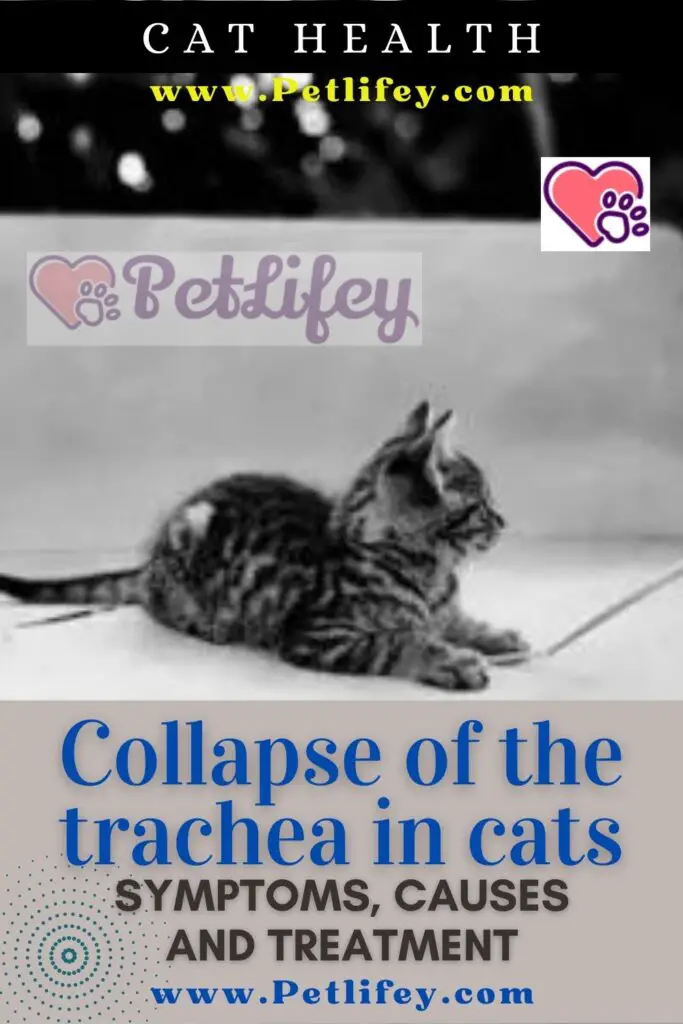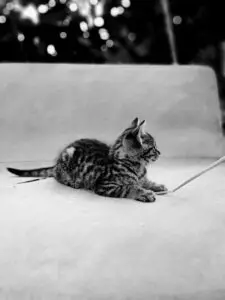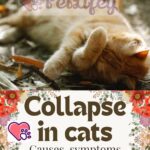
What is tracheal collapse? A collapsed trachea can cause severe discomfort in cats, especially our furry ones a bit chubby. Let’s identify the symptoms, causes and treatment of tracheal collapse in cats together.
The trachea is a flexible tube and similar to a vacuum tube. It has small rings of cartilage that help keep the airways open when the cat breathes, moves, or coughs. The cartilage rings are C-shaped, with the open part of the C facing up. In some cats, the C-shaped cartilage weakens and begins to flatten. As the upper part of the cat’s trachea narrows, as we have already read in the article on the collapse of the dog’s trachea, the cartilage rings become progressively flatter until the trachea collapses.
Symptoms of collapse of the trachea in cats
Symptoms are almost always aggravated by external forces including excitement, exercise, obesity, exposure to heat, and inhalation of irritants such as smoke or dust. Affected animals often exhibit one or more of the following symptoms:
- violent cat cough (which sounds like a horn)
- difficulty breathing
- exercise intolerance
- vomiting efforts of the cat
- rapid breathing
- Wheezing when inhaling
- Loss of consciousness
Causes of tracheal collapse in cats
When we talk about cat tracheal collapse, we are talking about a disease that affects both males and females. The problem is often caused by an inherited birth defect.
Other causes include:
- Sudden changes in nutrition
- Chronic airway disease
- Cat obesity
- Respiratory infection
- Airway obstruction
Diagnosis of the disease
The diagnosis will only be made by the competent doctor who will be helpful and necessary to provide a complete health history of your cat, including a history of recently observed symptoms. After taking a detailed history, the vet will perform a complete physical exam on your cat, as well as routine laboratory tests which include complete blood count (CBC), biochemical profile, and urinalysis.
Complete blood count results may indicate an excessively high number of white blood cells which is definitely indicating the presence of an infection. Diagnostic images are essential for diagnosis, as the lungs and trachea can be considered as comprehensively as possible.
Chest x-rays remain a valuable tool and can reveal a collapse, while helping the vet to pinpoint the location of the collapse. In some cases, you might even find an enlargement on the right side of the cat’s heart.
Fluoroscopy, another advanced diagnostic technique that can provide images of internal organs in real time and this technique, fortunately can also be used for cats. Fluoroscopy works by using an X-ray device placed in front of a fluorescent screen, through the screen it observes the cat and can therefore observe its internal structure, allowing a better and more accurate image.
The vet may also take a tissue sample from inside the trachea for laboratory tests. To determine the severity of the collapse, another technique called bronchoscopy can also be used. In this procedure, the bronchoscope, a tubular instrument with an attached camera, is screwed into the trachea and the images are retrieved and reported in video equipment that can be examined and evaluated in the diagnostic evaluation process.
Bronchoscopy is a more invasive method than standard radiography, but it can provide a much more detailed view of abnormalities in the tracheal tube, including foreign bodies, bleeding, inflammation, or cancers of the airways. Bronchoscopy can also establish the degree of tracheal narrowing, which can range from 1 to 6, as measured by the increase in blood.
Treatment of collapsed trachea in cats
Hospitalization is necessary if the cat has severe symptoms and cannot breathe properly. To compensate for the cat’s respiratory problems, oxygen therapy is administered, often the animal is sedated in such a way that it does not suffer, but also to ensure that it does not rebel against the physical restrictions caused by the disease and against the treatments used.
The treatment will continue until the cat has stabilized. Several drugs can be used in the treatment of collapsed trachea. Cough suppressant medications can be used to minimize ongoing stress. With tracheal collapse, the vet will also prescribe medicines to dilate the normal airways to facilitate normal breathing.
Other drugs are also being considered to reduce inflammation of the trachea and to reduce symptoms. In some cases, surgery may be required, especially if the obstruction becomes a problem. However, complications become possible for the animal after surgery.
Tips for our cat’s health

Although adequate recovery time should be given to the cat, a healthy diet is highly recommended to reduce weight. Weight reduction plays an important role in symptom relief, and most cats respond well to a well-planned weight loss program.
Talk to your vet so that they can think of a weight loss program that is best suited to the age, health and breed of the cat. Furthermore, overexcitation is not recommended in these animals, as it can trigger an attack due to their already impaired lung function.
Keep the cat indoors as much as possible, leaving him enough space to walk freely without overdoing it. Avoid inhaled irritants (such as tobacco). Try to avoid using collars, switch to harnesses. As far as possible, avoiding respiratory infections, such as bordetella infection, with a correct vaccination of the cat, it is possible.
Also maintain proper hydration of the respiratory tract. Try to keep the environment dry, using simple humidifiers at home, avoid stress as much as possible. The prognosis for the remission of the disease can be positive if we try to respect adequate treatment and weight loss our cat, a little too plump, all this so that we can avoid the collapse of the cat’s trachea.






